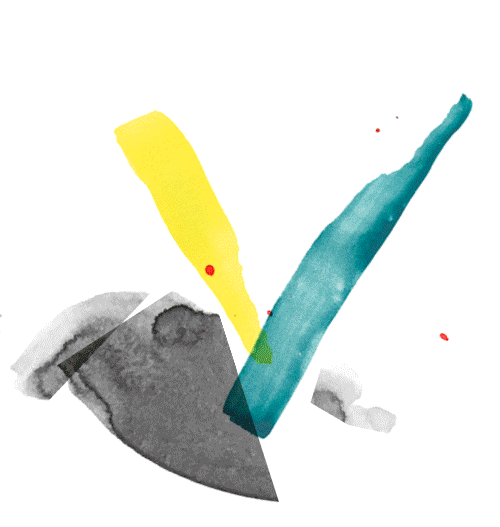

Sign up for our newsletters. You can change the settings or unsubscribe at any time.
Thank you for your subscription. We have sent you an e-mail with a confirmation link.


exp. 1
exp. 2
exp. 3

Léo Corrêa
Was part of: exp. 1
Léo Corrêa
Lives and works in Rio de Janeiro, BR
On September 2, 2018, a fire razed the oldest scientific institution in Brazil to the ground. Thoroughly neglected and underfunded by government authorities for years, the Museu Nacional da Universidade do Rio de Janeiro, associated with the Federal University of Rio de Janeiro, was considered among the most important museums of natural history and anthropology in the Americas. In what way does such a fire mobilize our unconscious? How does it shape our imagined futures? The blaze ravaged not only the historical building but more devastatingly destroyed a still unknown yet significant amount of the twenty million objects held within. The widespread destruction caused irreversible damage to the museum’s documentary collections, including ethnological artifacts of the original inhabitants of the region, and recordings of languages no longer spoken. The Bendegó meteorite is among the very few survivors of the catastrophe.
New Look
Flávio de Carvalho
Performance
BLM KOREA ARTS
#BlackLivesMatter #BLMKoreaArts
Young-jun Tak
Statement
II: La Solidaridad va Más Allá de un Concepto. Entre las Curadoras de la XI Berlin Biennale
Lisette Lagnado, Agustín Pérez Rubio
Conversation
Struggle as Culture: The Museum of Solidarity, 1971–73
María Berríos
Essay
Umbilical Cord Amulet
McCord Museum
Object
El primer nueva corónica y buen gobierno
Felipe Guamán Poma de Ayala
Chronicle
By using this website you agree to the use of cookies in accordance with our data privacy policy.

Léo Corrêa
Was part of: exp. 1
Léo Corrêa
Lives and works in Rio de Janeiro, BR
On September 2, 2018, a fire razed the oldest scientific institution in Brazil to the ground. Thoroughly neglected and underfunded by government authorities for years, the Museu Nacional da Universidade do Rio de Janeiro, associated with the Federal University of Rio de Janeiro, was considered among the most important museums of natural history and anthropology in the Americas. In what way does such a fire mobilize our unconscious? How does it shape our imagined futures? The blaze ravaged not only the historical building but more devastatingly destroyed a still unknown yet significant amount of the twenty million objects held within. The widespread destruction caused irreversible damage to the museum’s documentary collections, including ethnological artifacts of the original inhabitants of the region, and recordings of languages no longer spoken. The Bendegó meteorite is among the very few survivors of the catastrophe.
Being in Crisis together – Einander in Krisen begegnen
Feminist Health Care Research Group (Inga Zimprich/Julia Bonn)
Online workshop
El primer nueva corónica y buen gobierno
Felipe Guamán Poma de Ayala
Chronicle
Struggle as Culture: The Museum of Solidarity, 1971–73
María Berríos
Essay
Museo de la Solidaridad Salvador Allende (MSSA) in Berlin
A conversation between María Berríos and Melanie Roumiguière
Conversation
Invitation to the Species: Cecilia Vicuña
Tamaas / Cecilia Vicuña
Podcast
Maternidades subversivas
María Llopis
Monograph
By using this website you agree to the use of cookies in accordance with our data privacy policy.

Léo Corrêa
Was part of: exp. 1
Léo Corrêa
Lives and works in Rio de Janeiro, BR
On September 2, 2018, a fire razed the oldest scientific institution in Brazil to the ground. Thoroughly neglected and underfunded by government authorities for years, the Museu Nacional da Universidade do Rio de Janeiro, associated with the Federal University of Rio de Janeiro, was considered among the most important museums of natural history and anthropology in the Americas. In what way does such a fire mobilize our unconscious? How does it shape our imagined futures? The blaze ravaged not only the historical building but more devastatingly destroyed a still unknown yet significant amount of the twenty million objects held within. The widespread destruction caused irreversible damage to the museum’s documentary collections, including ethnological artifacts of the original inhabitants of the region, and recordings of languages no longer spoken. The Bendegó meteorite is among the very few survivors of the catastrophe.
Being in Crisis together – Einander in Krisen begegnen
Feminist Health Care Research Group (Inga Zimprich/Julia Bonn)
Online workshop
O Bailado do Deus Morto
Flávio de Carvalho
Play
III: La familia son quiénes se alegran con nuestros actos diarios. Detrás de las curadoras de la XI
María Berríos, Agustín Pérez Rubio
Conversation
Undocumented Rumours and Disappearing Acts from Chile
María Berríos
Essay
Teatro da Vertigem
Monograph
St Sara Kali George
Delaine Le Bas
Soundscape
By using this website you agree to the use of cookies in accordance with our data privacy policy.

Léo Corrêa
Was part of: exp. 1
Léo Corrêa
Lives and works in Rio de Janeiro, BR
On September 2, 2018, a fire razed the oldest scientific institution in Brazil to the ground. Thoroughly neglected and underfunded by government authorities for years, the Museu Nacional da Universidade do Rio de Janeiro, associated with the Federal University of Rio de Janeiro, was considered among the most important museums of natural history and anthropology in the Americas. In what way does such a fire mobilize our unconscious? How does it shape our imagined futures? The blaze ravaged not only the historical building but more devastatingly destroyed a still unknown yet significant amount of the twenty million objects held within. The widespread destruction caused irreversible damage to the museum’s documentary collections, including ethnological artifacts of the original inhabitants of the region, and recordings of languages no longer spoken. The Bendegó meteorite is among the very few survivors of the catastrophe.
„Klaus Eckschen: Hörspiel“
Die Remise
Hörspiel
O Bailado do Deus Morto
Flávio de Carvalho
Play
Queer Ancient Ways: A Decolonial Exploration
Zairong Xiang
Monograph
Invitation to the Species: Cecilia Vicuña
Tamaas / Cecilia Vicuña
Podcast
IV: How Fear Can Dismantle a Body. Vis-a-Vis with two of four curators of the 11th Berlin Biennale
María Berríos, Lisette Lagnado
Conversation
Hatred Among Us
Lisette Lagnado
Essay
By using this website you agree to the use of cookies in accordance with our data privacy policy.
By using this website you agree to the use of cookies in accordance with our data privacy policy.




